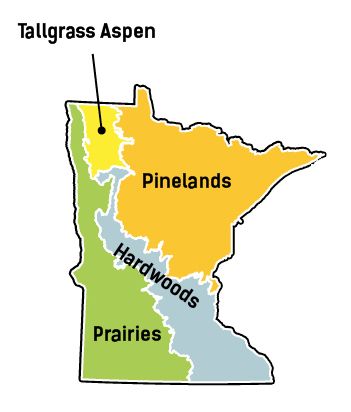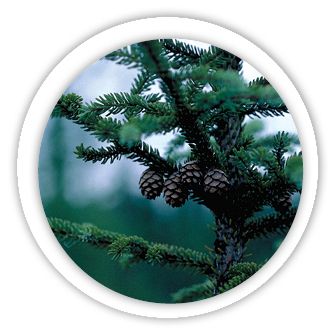Minnesota Grown

What makes Minnesota such a great state for agriculture? Many soil types, terrains, and climate that are good for growing plants and animals.
What Is a Biome?
Soil types, terrains, and climate are some of the things that caused biomes to form in our state. Biomes are part of the earth's surface that are divided by climate, soil types, and the kinds of plants and animals that live within them. Minnesota has four major biomes. These biomes greatly affect what can be grown in them. Something that can be grown easily in southwest Minnesota may not grow well in northeast Minnesota. The biomes and rainfall have a big impact on what grows best where in our state.

Pinelands
The glaciers created ridges of rocky, sandy moraines and hundreds of lakes and swamps. This biome has many evergreen trees that like a short summer growing season. Peatlands occur on the flat bottoms of former glacial lakes.
Prairies
The receding glaciers left flat land and rich black topsoil. Most of the land is farmed. Our famous Red River Valley is in this biome. This is Minnesota's driest biome. Winds blowing across the soil can carry it away.
Hardwoods
This biome is warmer than pinelands, but cooler and moister than prairies. Most land has been cleared for farms and towns. There are many broadleaf trees and some pines. Blocks of glacial ice dropped large boulders, and melted and formed lakes.
Think & Discuss
- How are the biomes different from one another?
- Why do you think the Pineland biome's main crop is forests, not field crops?
- What could you grow if you lived in the Hardwoods biome?
- Why is the Prairie biome so good for farming crops?
- If you were going to start a farm, which biome would you select? What would you grow on your farm?
Did you know?
- Minnesota is the TOP producer in the country of turkeys. Kandiyohi County raises the most.
- The Mississippi River transports 59% of all grain exported from the United States. The headwaters of the Mississippi River are in Clearwater County.
- Minnesota raises more sugarbeets than any other state in the U.S. Polk county leads Minnesota in sugarbeet production with 2.5 million tons.
- Martin County has the most hogs of any county: 700,000!
- Otter Tail County leads the state in bison (buffalo) production.




